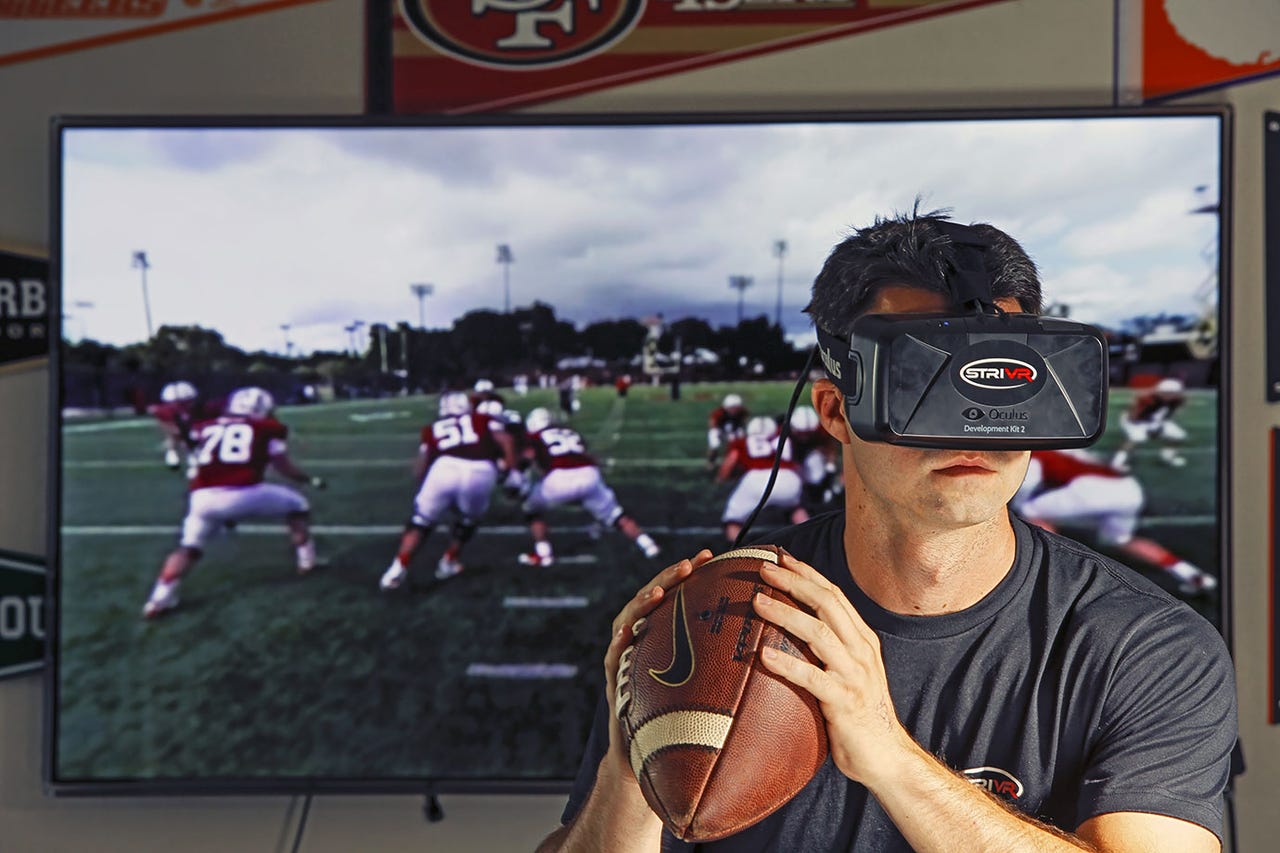Enterprise VR: How companies are piloting tech used by NFL teams


There's been a lot of news about companies piloting enterprise VR training programs, but not much in the way of behind-the-scenes looks into how managers have implemented those programs.
When I caught wind that Tyson Foods has been using a VR platform called STRIVR, which has also been used by NFL teams for quarterback training, I got curious what the thinking was.
STRIVR is one of a growing number of VR hardware and software firms focusing on enterprise training. Mixed reality offers several advantages over typical training regimens, especially in industries where heavy machinery or perilous environments make training scenarios potentially dangerous.
Also: NFL in London: How big data is helping to change the game when it comes to player performance
STRIVR's headset is one of a handful of enterprise-focused devices that track eye movement in order to measure engagement and understanding of training exercises. Earlier this year, a company called StarVR debuted its own eye-tracking VR headset.
The technology also enables companies to track trainee performance in modules, potentially alleviating a common challenge in the hiring process: Employees that test well on paper but don't perform to expectations in real world scenarios.
To understand how and why a major company went about implementing enterprise VR, I reached out Tyson and found Pan Douangdara, currently Senior Specialist in Sales, but previously a Senior Operations Specialist involved in the VR pilot.
According to Douangdara, the Tyson pilot focused on trainees in a Dakota City, Nebraska, beef plant. Below are highlights from my recent conversation with Douangdara, including insights about where VR may not be the most effective enterprise training.
Q: When considering adopting VR training, what specific existing training challenges did STRIVR's technology seem to solve?
Bringing in STRIVR's technology into our industry solved a couple of salient issues with the traditional training process. First, the way the technology engages the trainee doing the training, provides a significant advantage, by getting the team member involved in the activity.
Traditional training would consist of PowerPoint slide shows and multiple choice questions in a classroom setting, where the team member is not engaged. Leveraging VR training is more realistic in the sense of the experience it provides to the trainee. They feel like they are actually out on the plant floor with all the sights and sounds they would interact with normally in that environment.
The technology is a big hit with our younger team members as well. They can relate more to the technology since it's platform like a video game. They are more apt to training with this technology because it makes learning fun. This close to real-life experiences is critical as we bridge the gap on training team members today.
Q: Let's say I'm a new hire at the plant where STRIVR is being trialed. Walk me through what I'd be doing during training. When and for what durations would I be doing VR training?
The training is part of our ongoing efforts to educate and keep our team members safe. We would introduce you to the traditional safety training curriculum to get you started. As you advance through the traditional program, we would then incorporate our VR training before you entered the plant floor. The VR training would roughly take 15-20 minutes, and what's nice about the technology is that the facilitator can step into the training with the team member and be hands on with them while he or she is going through the VR experience. In the VR experience, there is an opportunity for trainers to go back to certain topics or answer questions that the team member may have to make sure retention of the training is accomplished.
Q: Are there separate training modules for different positions, or is the training more generally applicable to all workers in this plant? In either case, give me a sense of some of the specific tasks trainees are learning to do virtually.
The STRIVR training experience is based on General Safety Hazards. We chose this experience so that it can be used across the board in our plants. We discuss a multitude of topics in the experience, ranging from Propper Personal Protective Equipment (PPE), to Slips/Trips/Falls, Power Industrial Trucks, and Hazard Identification. During the VR training the team member will learn the importance of Propper PPE, how to identify Slips/Trips/Falls, and how to be safe around Power Industrial Trucks, etc. The training not only trains the trainee to identify General Safety Hazards, but it also helps teach the team member what to do after the hazard has been identified.
In the future we hope to provide job specific training experiences in VR across the company.
Q: Are there training areas in this plant that you feel aren't yet suitable for VR but instead should be grounded in real-world, hands-on training? If so, what differentiates these tasks from those that lend themselves better to VR training?
Of course there are jobs around the plants that still require tangible, real-world experience. But for our specific VR module we chose to pilot we felt that it was a great place to start using the technology.
Those jobs that may not be as suitable for this training right now would be the positions where the team member needs to feel/hold/touch products or things. These jobs require sensory based feedback to the trainee which VR can't provide. As we continue to explore VR technology to increase worker safety and productivity, we understand there are some roles where teaching will continue be best done in a hands-on environment.
Q: Was the VR training pilot a hard sell internally, or was there broad enthusiasm to give this a try? How much internal education about VR and enterprise VR was necessary before enough stakeholders felt comfortable pulling the trigger?
Selling in the technology wasn't challenging--something that makes Tyson such a great place to work is the openness to innovation. When brainstorming of how to use this technology in our industry came up, we were met with little to no resistance. We highlighted the technology to the team and got everyone excited about how the use of VR could improve our worker safety. At Tyson, we are encouraged to always bring new ideas to the table to improve our work environment, so we did just that.
The concept sold itself, and it was up to us to apply it and show everyone what a strong tool it was.
Q: Do you have plans to expand VR training beyond this trial plant?
Yes we do. After a very well received demonstration to other business units amongst our organization, we have sparked their interest in how they can use this type of technology training in their world.